Bruichladdich is the first distillery we visit after the Fèis Ìle is over; it’s the one closest to Portnahaven where we’re staying. We park our car with a view to the sea inlet that splits the Isle of Islay open in the south.
The visitor’s centre is rustic with exposed wood beams and a wooden bar, and the tasting bar is set up with glasses already, but we don’t have much time to browse the shop before the tour starts. A young girl, eighteen years old, leads the group into the sunny courtyard to start us off with introductions. There are people from Germany, France, China, Canada (that’s us) and I don’t remember the others. Our young guide is from England and admits to being quite hungover—I start worrying about the value of the tour, but once she starts telling us about the distillery, I quickly realize that she is well trained and enthusiastic about the company. Soon I switch to the other side of the human circle to get out of the burning sun as I feel sweat trickling down my back and temples.

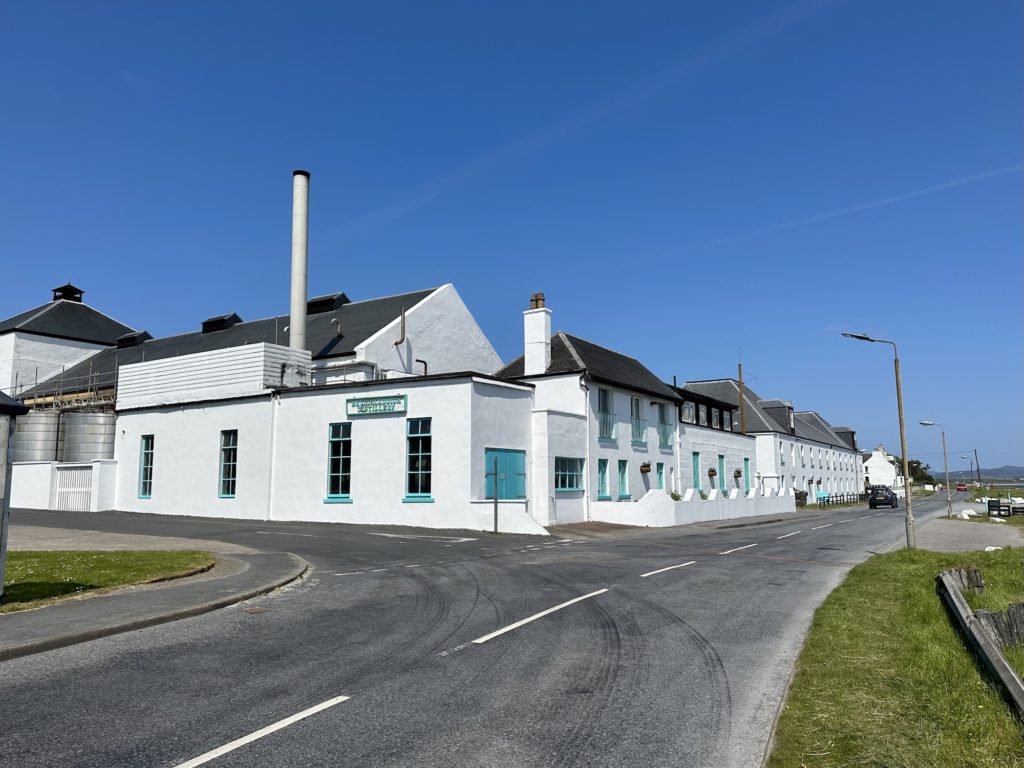
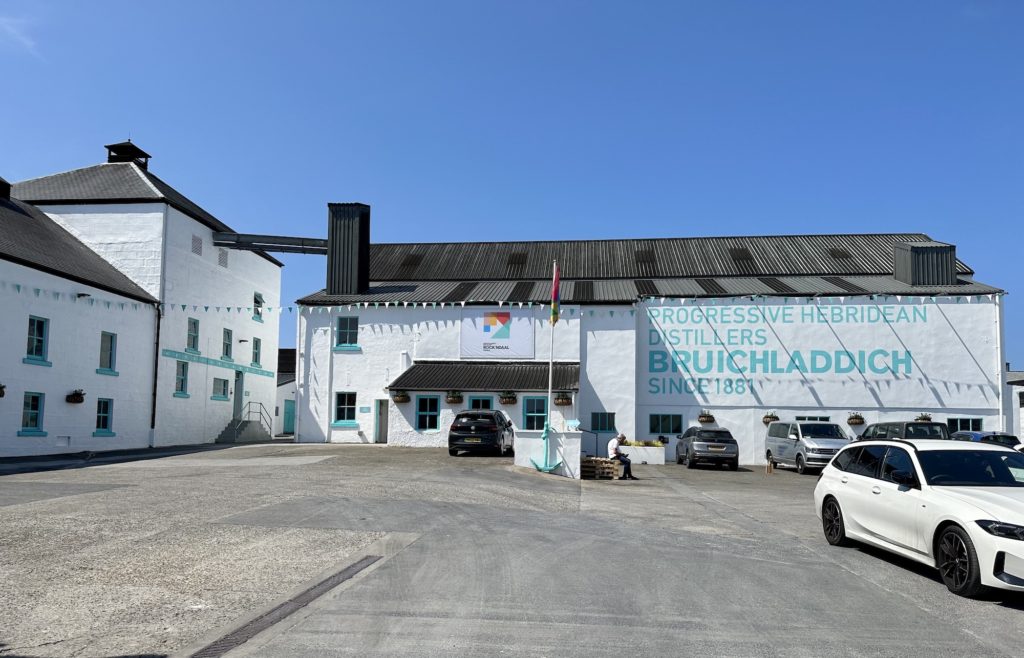
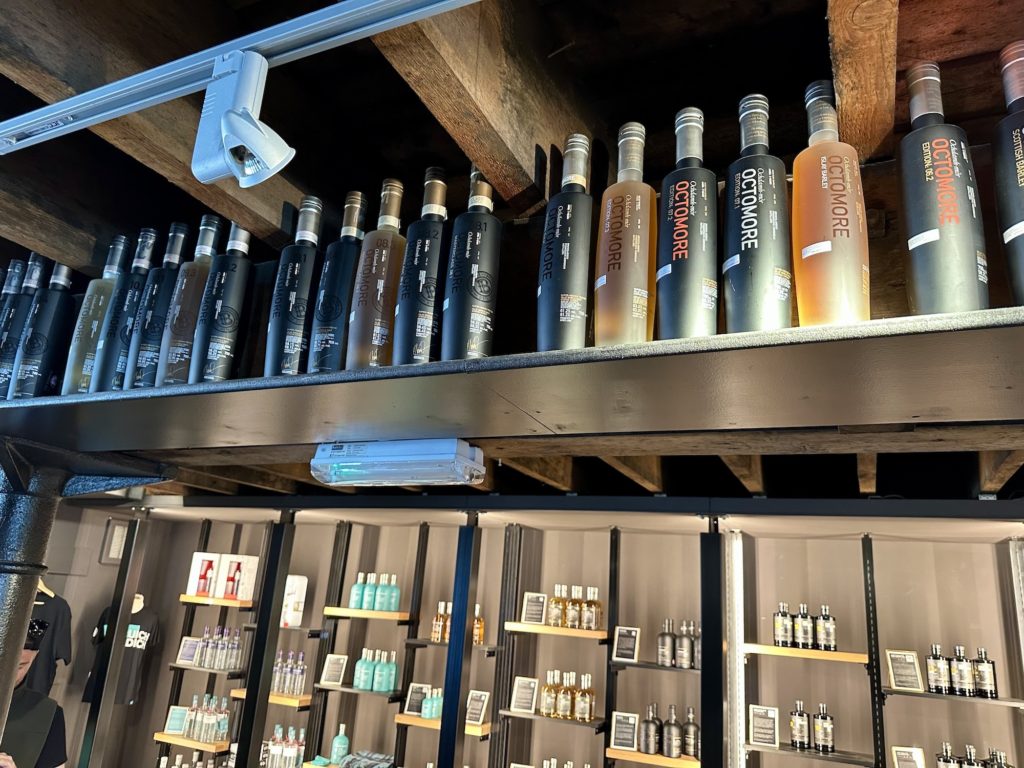
The tour starts in the mill house where we see the bottom of the silos that contain the malted barley, which gets delivered by trucks. Different barley species are used for different whisky expressions, and being on Islay we have to talk about peat, of course. Islay whisky is famous and known for being peated; that means peat is being used to fire the malting floors. The type of barley, the origin of peat as well as the amount of peat used and the length of exposure on the malting floor all influence the character of the spirit. Bruichladdich bottles its unpeated versions under the distillery name, then they have the peated Port Charlotte versions, and the Octomore range is the heaviest peated malt that exists if you go by the ppm count of the peated barley itself. Today, Bruichladdich’s bins are filled with Port Charlotte malt, the whiteboard informs us.
At the next stop, we see the actual mill that breaks down the malted barley into grist, so more sugars can be released during the fermentation. Our guide tells us that this is the only mill on Islay that is still belt-driven. The mill itself is so old that no replacement parts are available anymore, so when the belt broke a number of years ago, they asked around at other local distilleries; Ardbeg had a spare belt and graciously gave it to Bruichladdich who still operate with it and expect to do so for a long time coming, while Ardbeg’s own belt broke shortly after they generously gave their spare away. They had to change their own mill’s propulsion mechanism, the eighteen-year-old tells us with a devious smirk on her face.
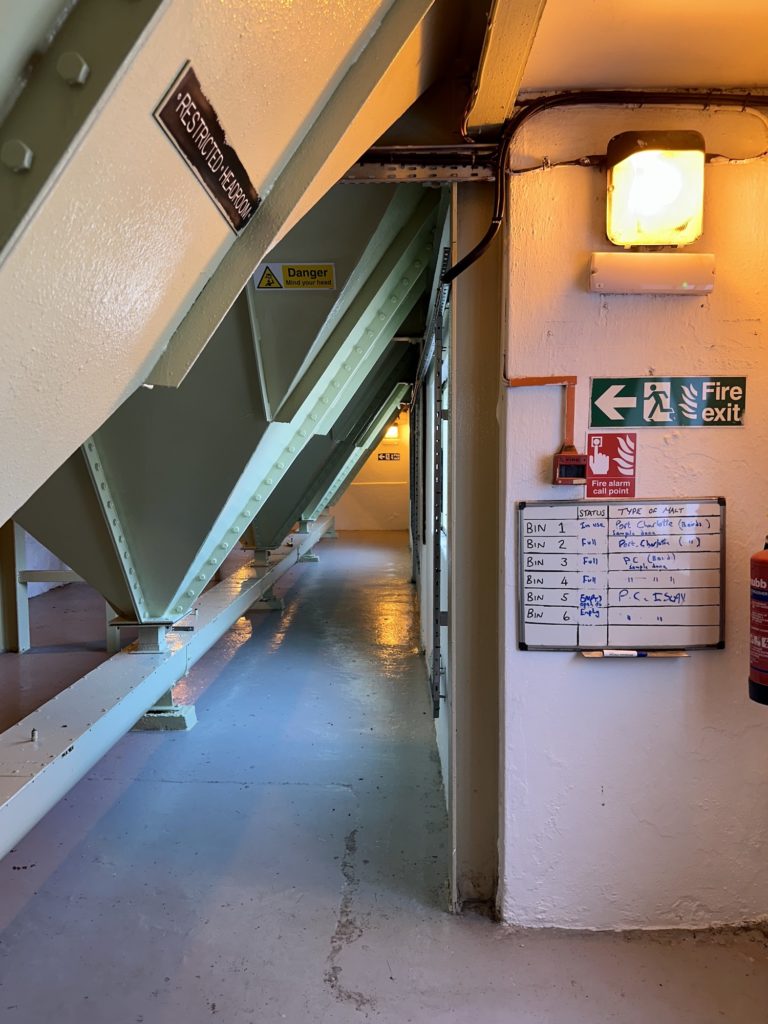
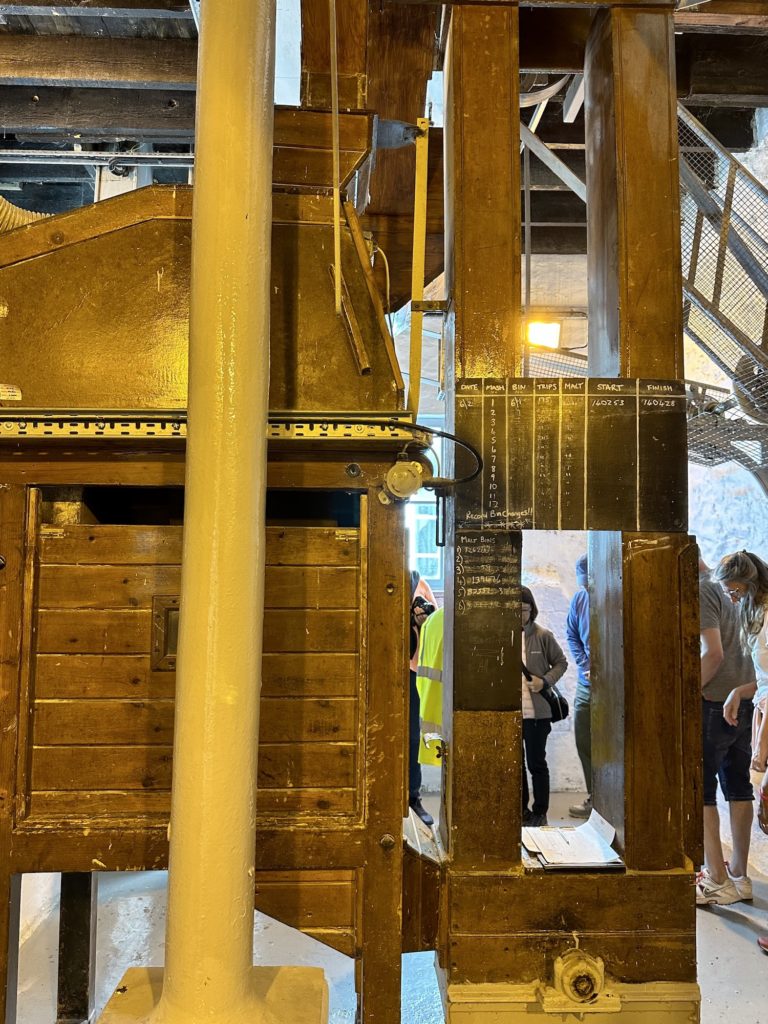
From the mill house we go to the mash house, where the fermentation takes place. First, the barley grist is stripped of its sugars in three washes in the mash tun, and then the barley sugar water (wort) is fermented in wash backs for several days. We have a peek into several wash backs, an empty one that gives a good idea of how big they are, and a few that are filled with wash in various stages of fermentation. Our guide asks us to step back to allow the CO2 byproduct to clear when she opens the lids. She doesn’t offer a sample of the wash and says she’s doing us a favour as it tastes quite awful.
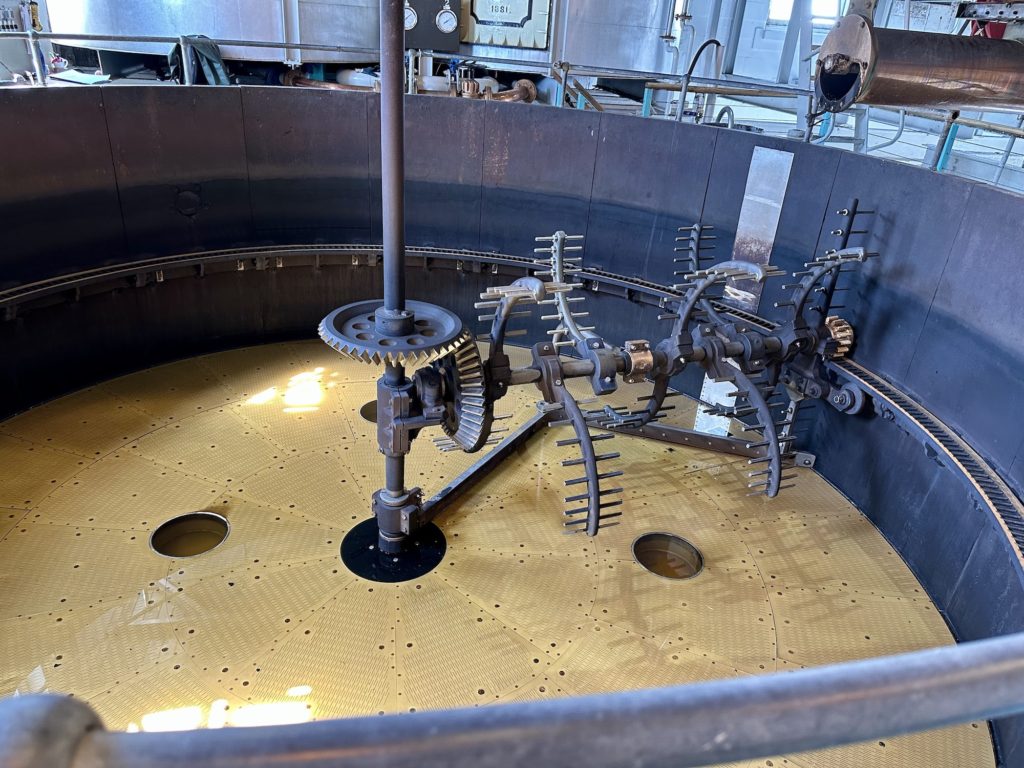
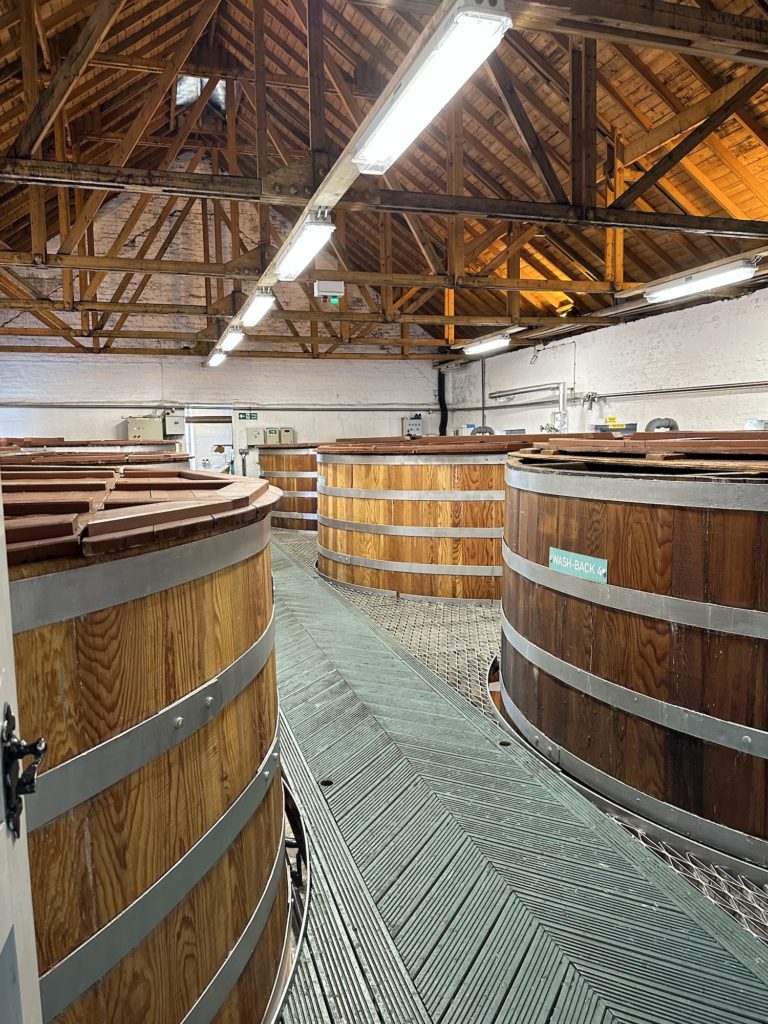
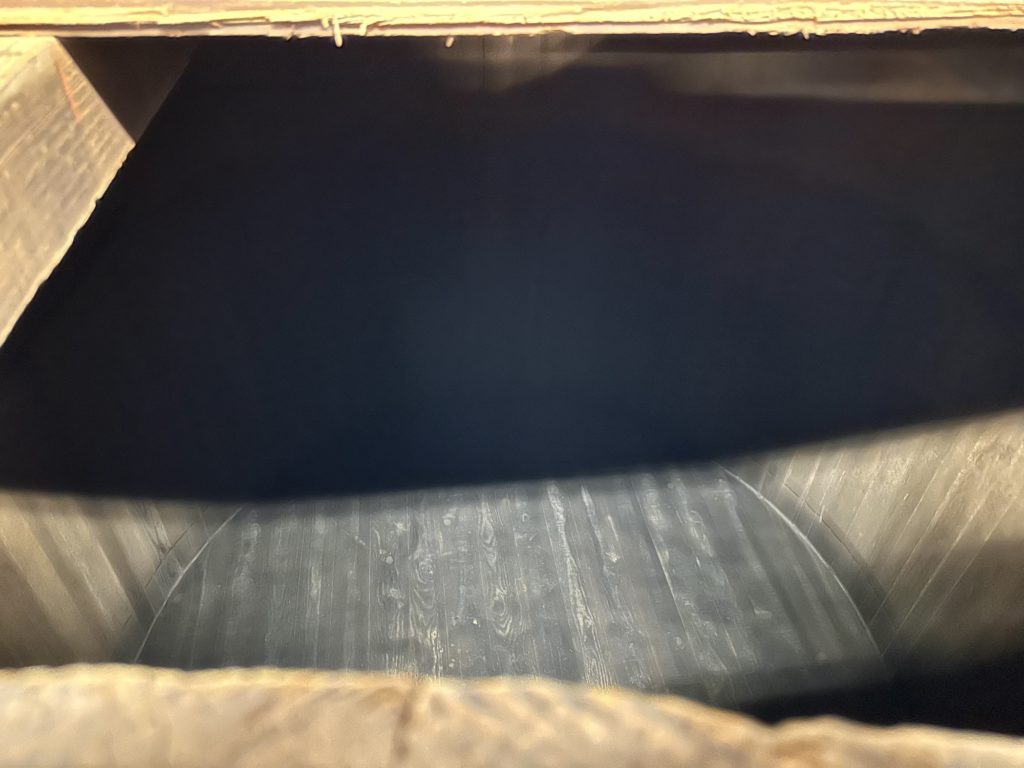
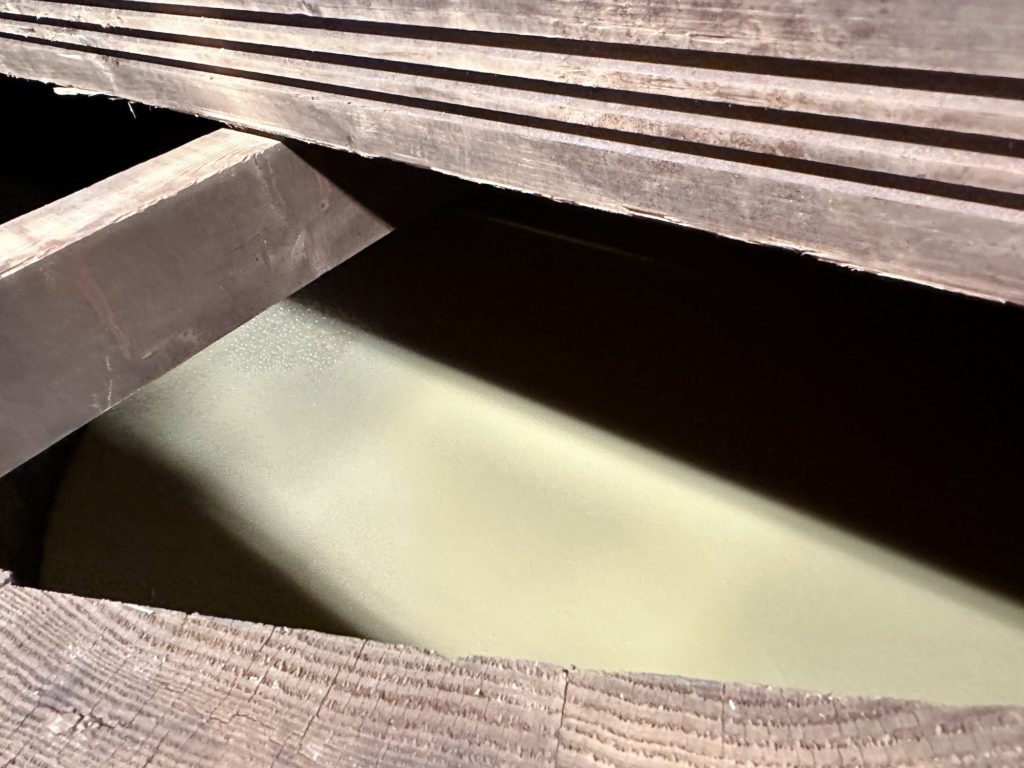
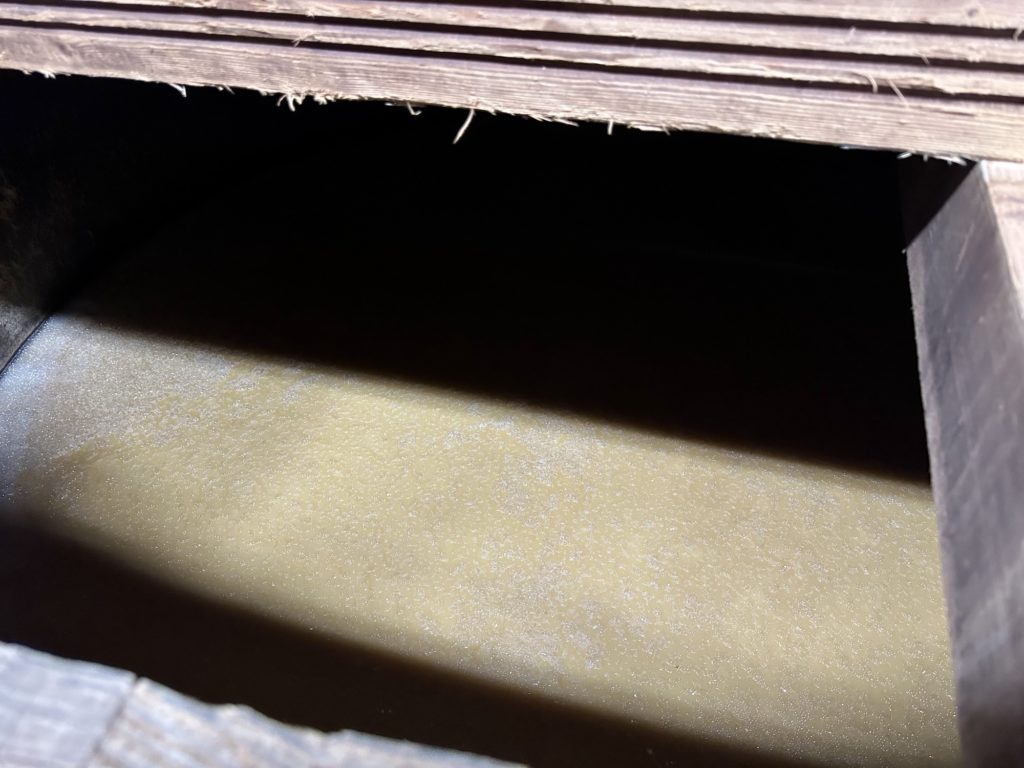
Entering the still house, we first see Ugly Betty, an old stubby still whose neck was cut down to fit the space; this type of still does not produce good whisky, but it is great for distilling gin, and so The Botanist, Bruichladdich’s own gin, is born. The pot stills for distilling the whisky are much prettier with their bottom curves and long necks. The first distillation of the wash produces what is called Low Wines at 20-25% ABV. The low wines are then distilled a second time to create the spirit that is matured to whisky.
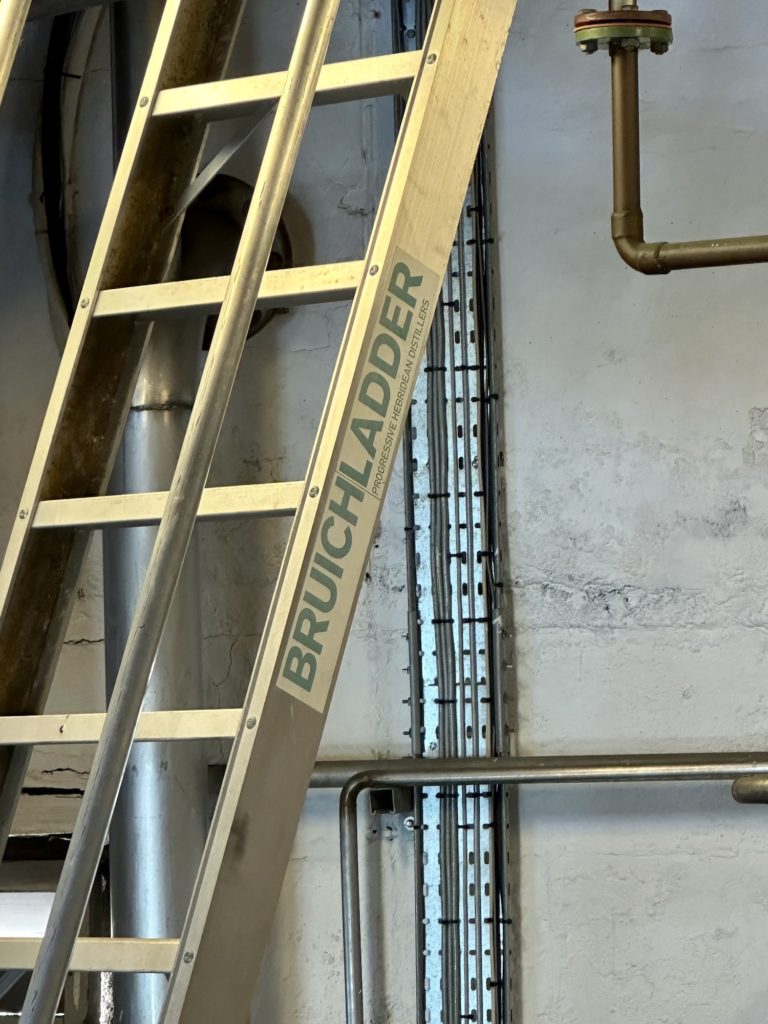
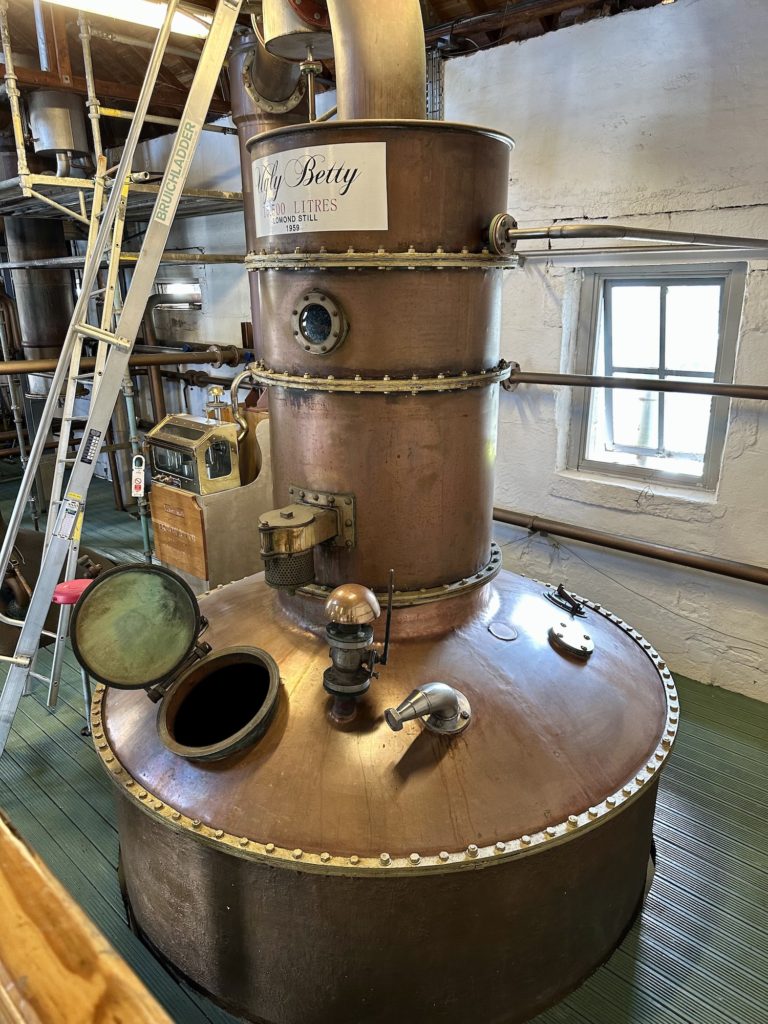
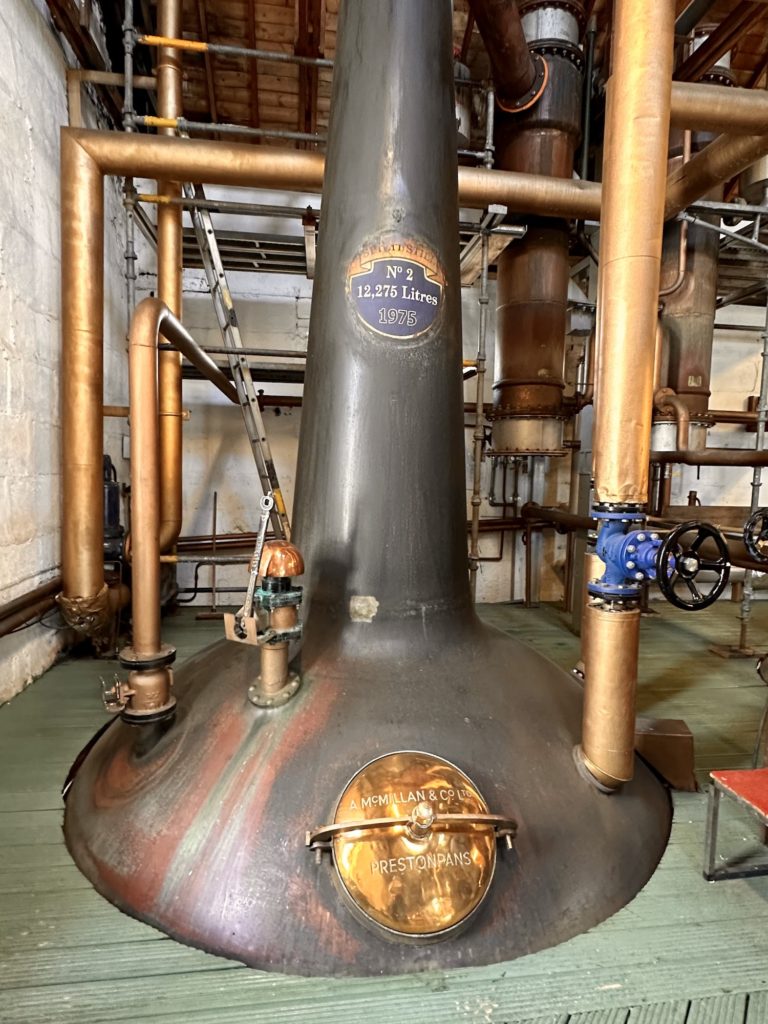
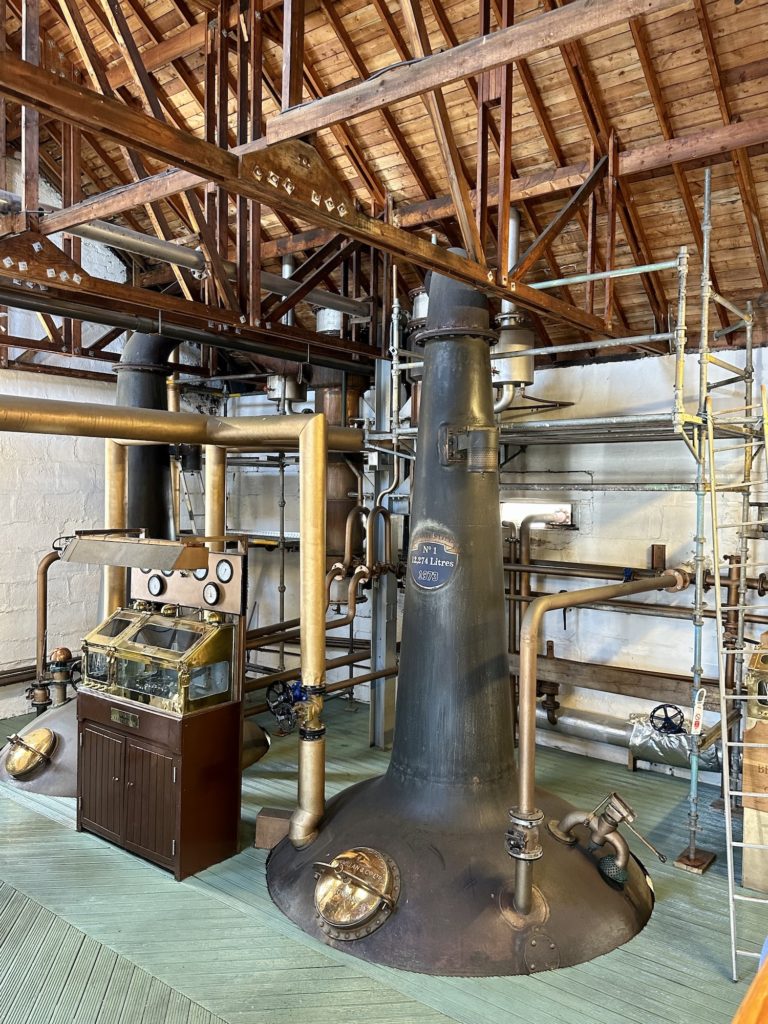
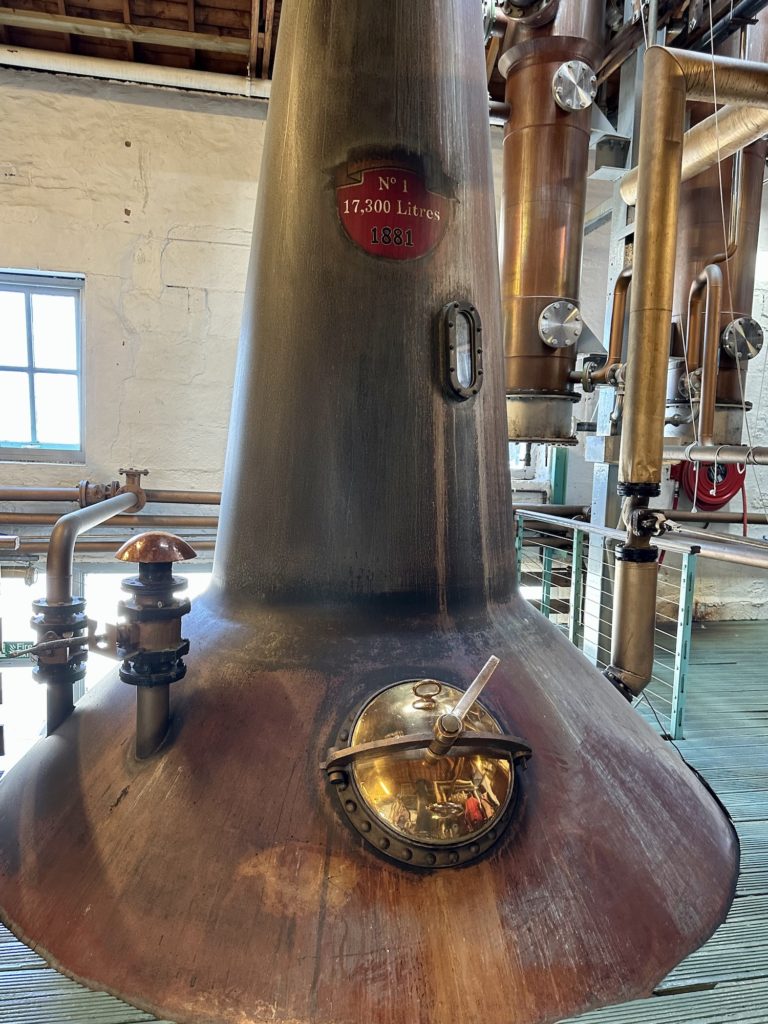
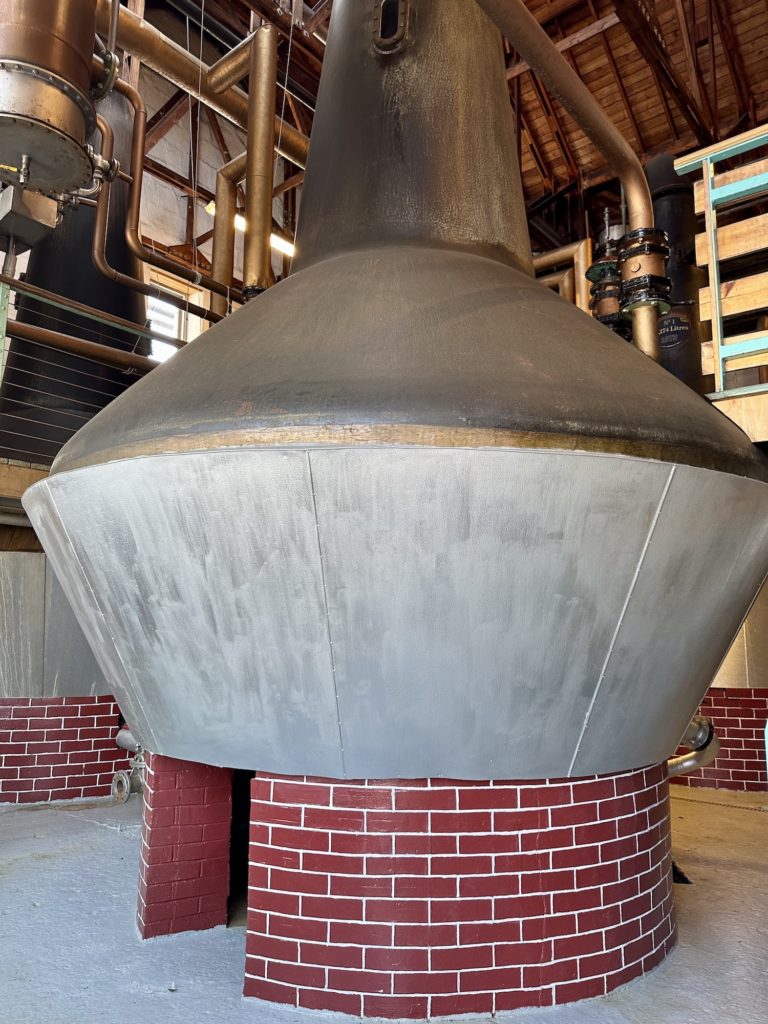
The distillate is filled into casks and matured for at least three years, by law, in order to be called whisky. Our next stop is at the warehouse, and the young guide is asking if anyone in the group has their birthday, today or recently or coming up… I tentatively raise my hand… “next month,” I say. “Okay, that works,” she says and instructs me to open the warehouse door, and as I open it, I shall make a wish while the group applauds and cheers. I feel silly but play along, and of course, I make a secret wish. We enter the dunnage warehouse, casks stacked three rows high lying on their side, the floor stamped earth. It smells a little mouldy mixed with spirit in here. While the whisky matures, a little alcohol evaporates from the casks, called the Angel’s Share. We walk around and look at different casks, getting an idea of what Bruichladdich is maturing and finishing at the moment in anticipation of releases of the following years. We find a few quite old casks that make our mouths water by the sheer thought of a try. The warehouse is the last stop of our tour, and I get to close the warehouse door to trap my wish and make it come true, as per the guide’s folklore. The whisky itself will make another stop in a bottling plant before it is released to the market.
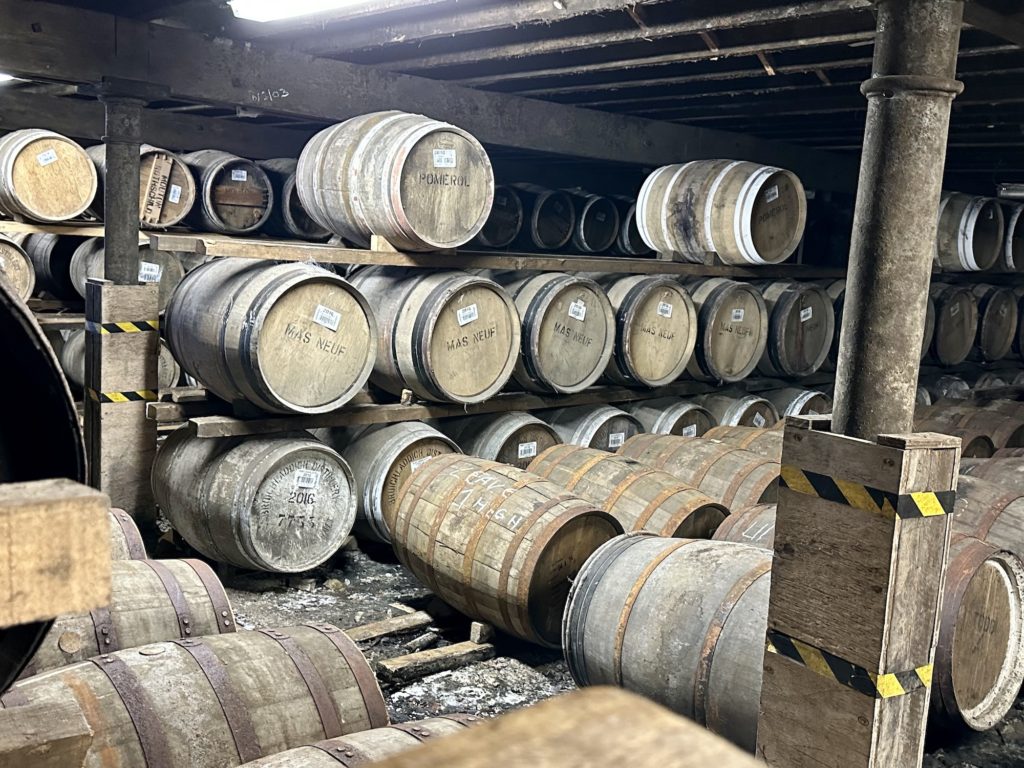
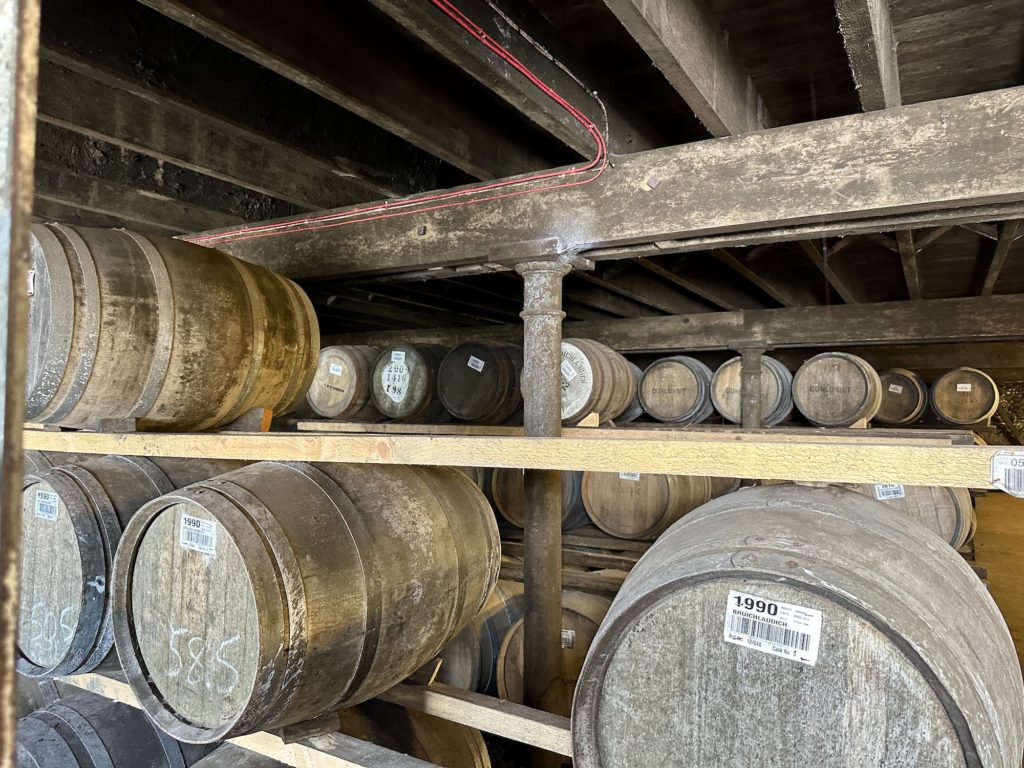
Included in the tour is a whisky tasting of three samples, and we return to the shop, where our glasses have already been filled. My friend and I opt for driver’s drams again, so we can savour our samples together at the cottage, but we are still curious to sniff and see the bottles of our samples. We will have to transfer them into mini bottles via funnel ourselves; I don’t find it quite kosher that we are to use the same funnel for all three spirits—for a purist, this will contaminate the taste with the previous whisky—so I am careful to go in the “right” order, from unpeated to heavily peated to super heavily peated. Our guide also pours us some Irn Bru from a can, which is the number one pop drunk in Scotland, vastly favoured over Coca Cola and the like. Well, if you know me you’ll also know that I never drink pop, or really any drink with sugar, but since it is so iconic in Scotland, I just have to try it. It tastes disgusting. Like liquid bubblegum.
Our whisky samples include the Bere Barley 2012, Port Charlotte Sauterne Finish, and Octamore Edition 13.4. We are also getting a sample of the current Fèis Ìle whisky, which is not just port finished but actually port matured! I’m extremely excited when I hear that since I am a lover of port wine and do enjoy a good port finished whisky. We will try them all when we are at home.
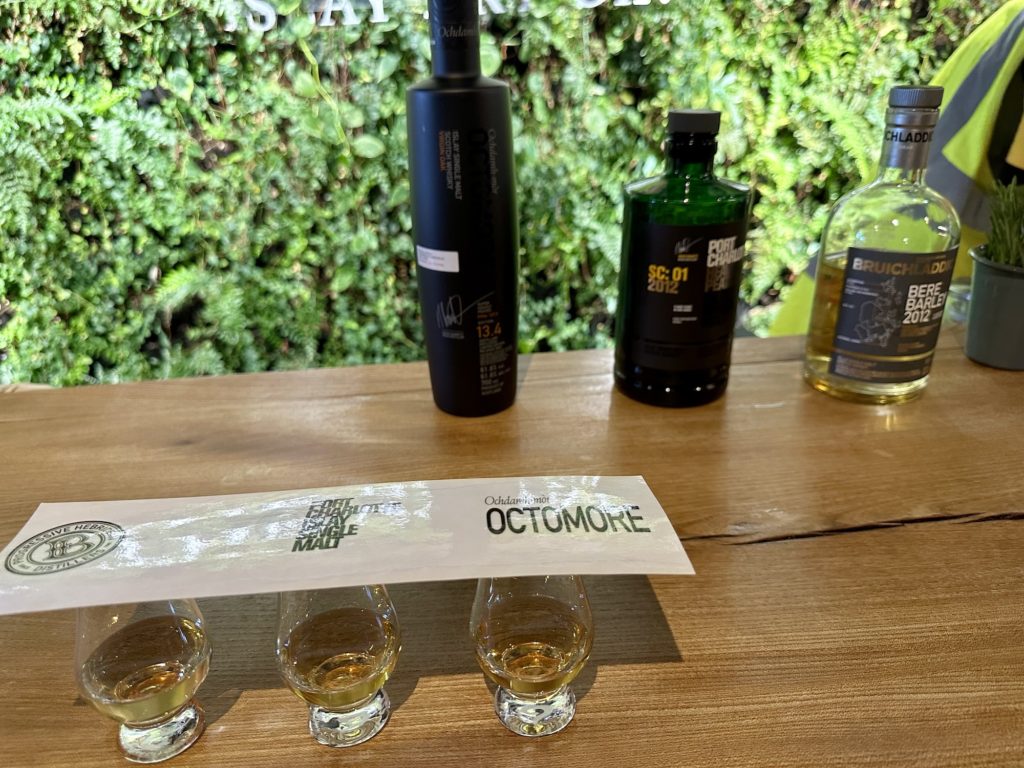
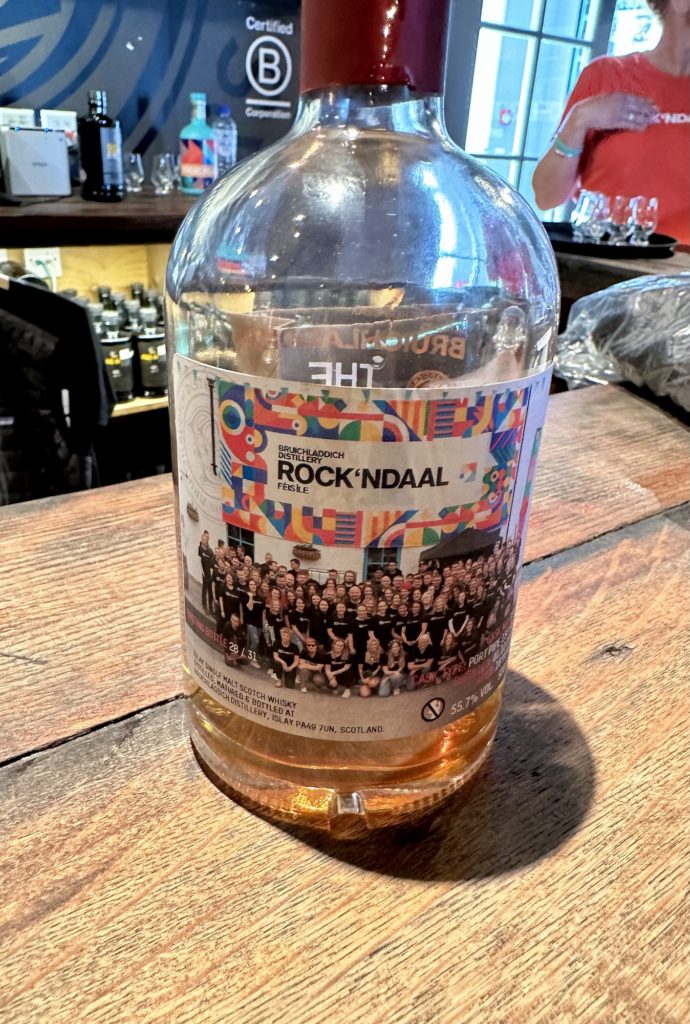
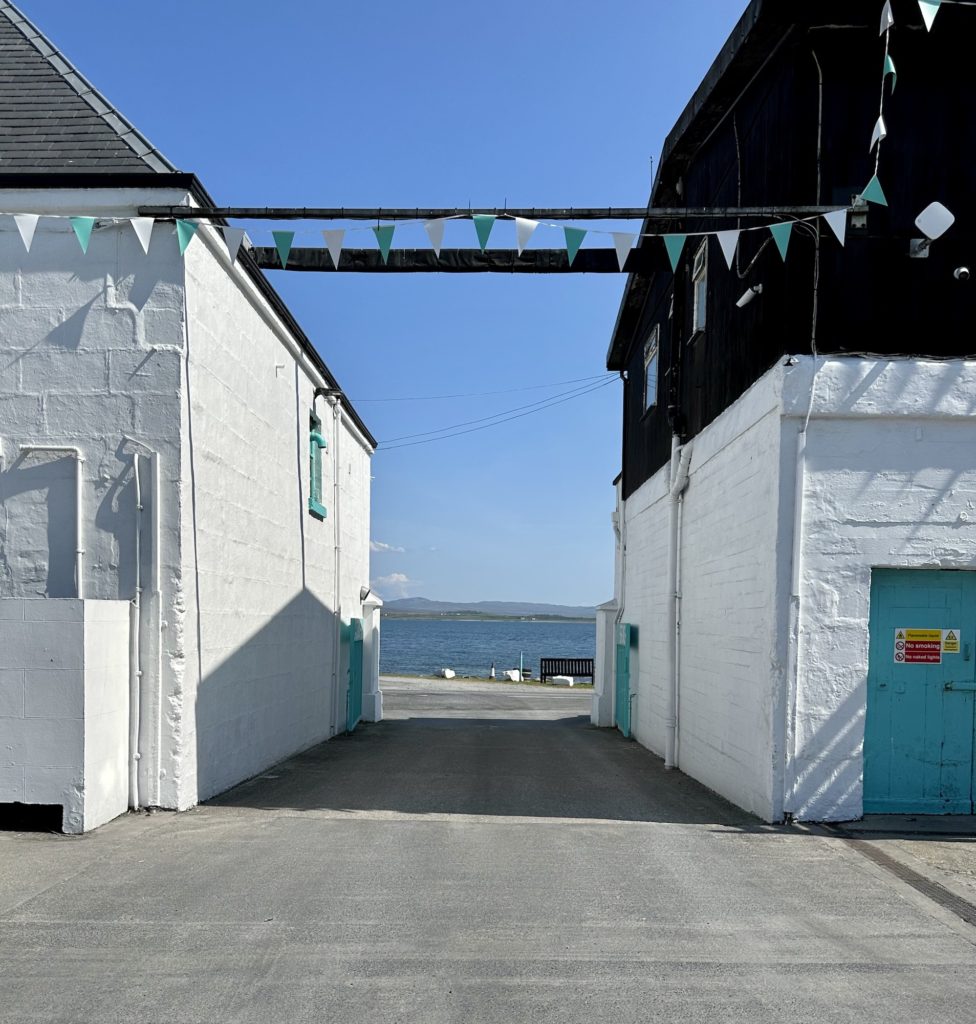
The Bere at 50% ABV is unpeated and rather sweet, but very easy to drink and enjoyable. The Port Charlotte Sauterne at 55.2% is good, but I still prefer the simple Port Charlotte, bourbon matured, no bells and whistles. We are both excited to try the Octamore (61.6%), we have never had it since it is very expensive for a no-age-statement whisky. It boasts of being super heavily peated, and I will admit that it truly is very peaty, and with a sweet signature spirit, it makes for a great overall experience. While it is enjoyable, I still would not invest in a bottle since the Port Charlotte is also very nice and much more affordable. If anyone ever wanted to gift me a bottle of Octamore, though, I would certainly not turn it down. And, well, Bruichladdich’s Rock’ndaal port expression at 55.7% and 18 years old is a sublime one-time-only experience, and I savoured it to the max.
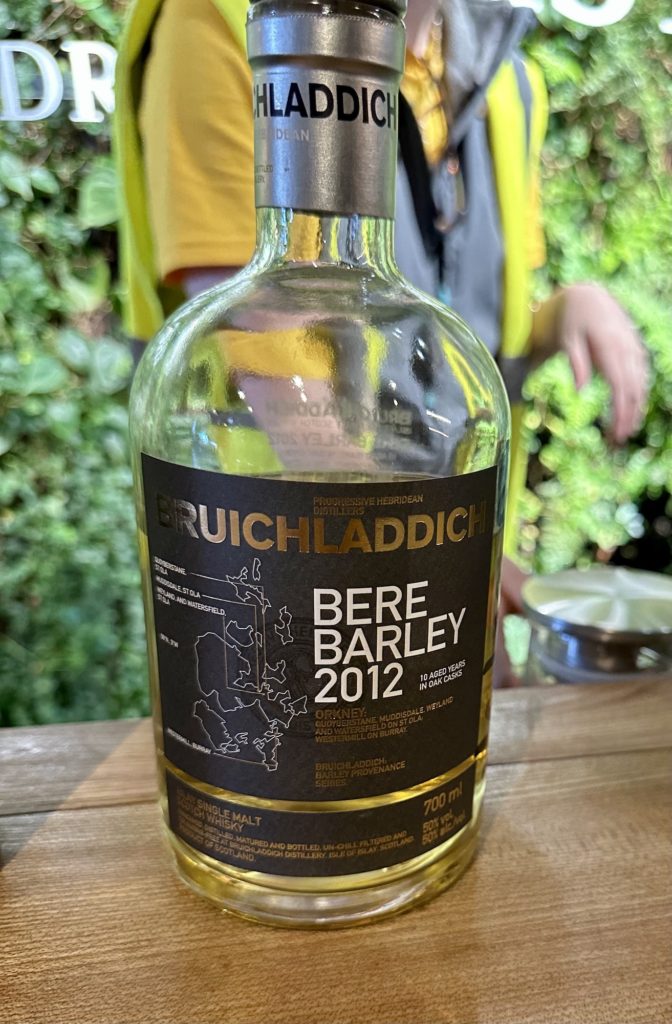
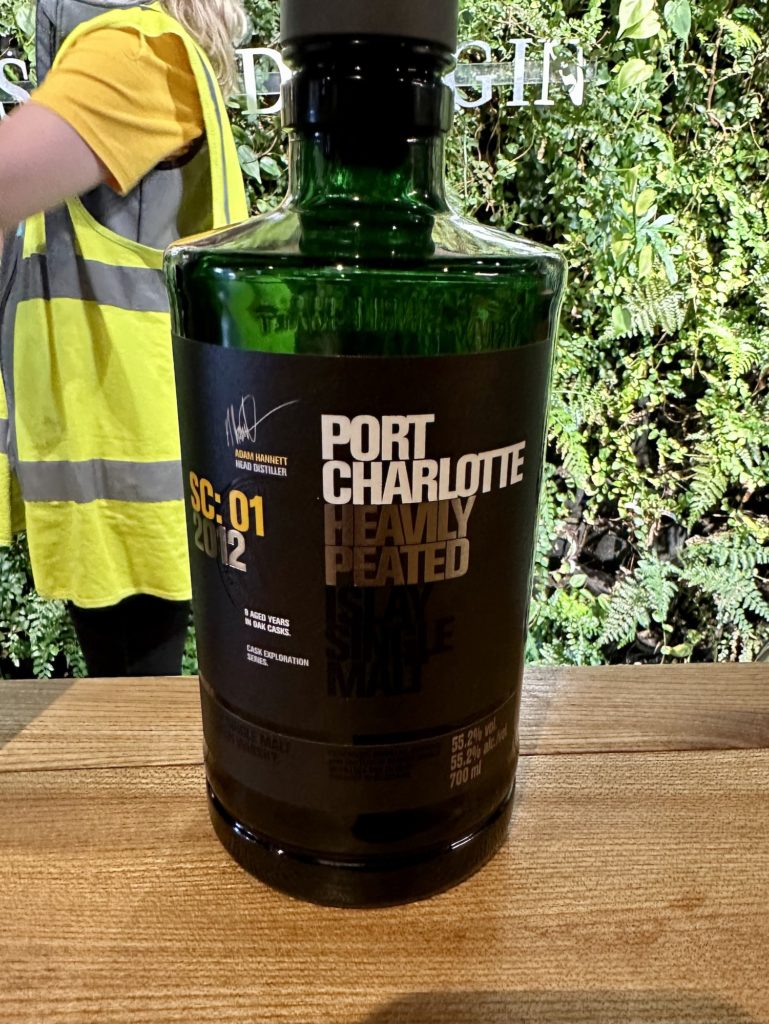
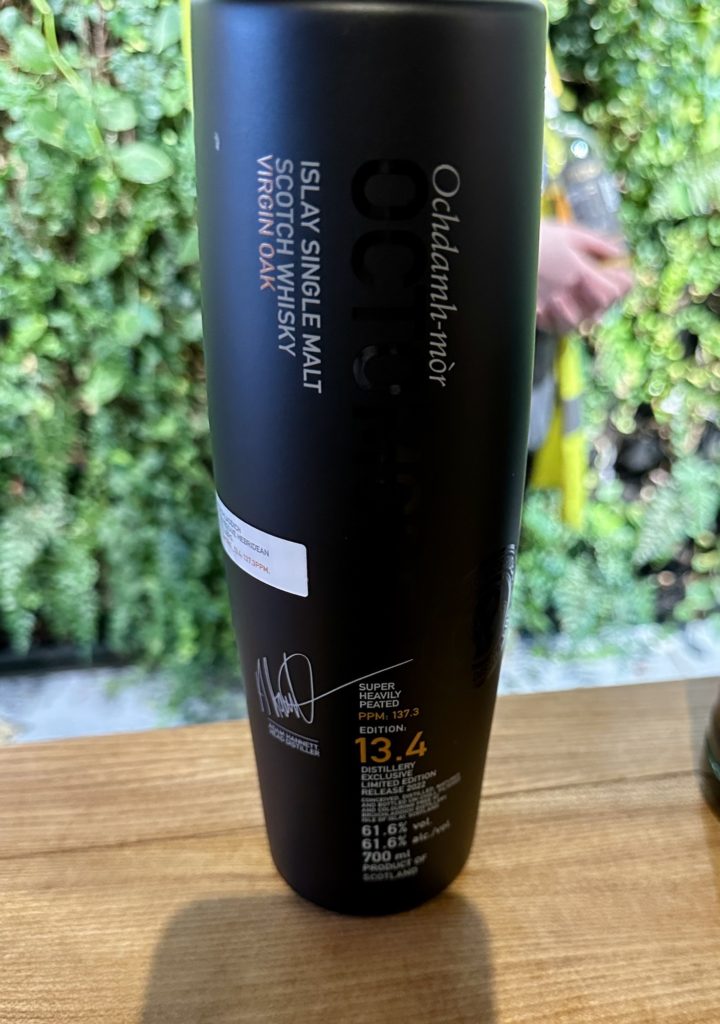

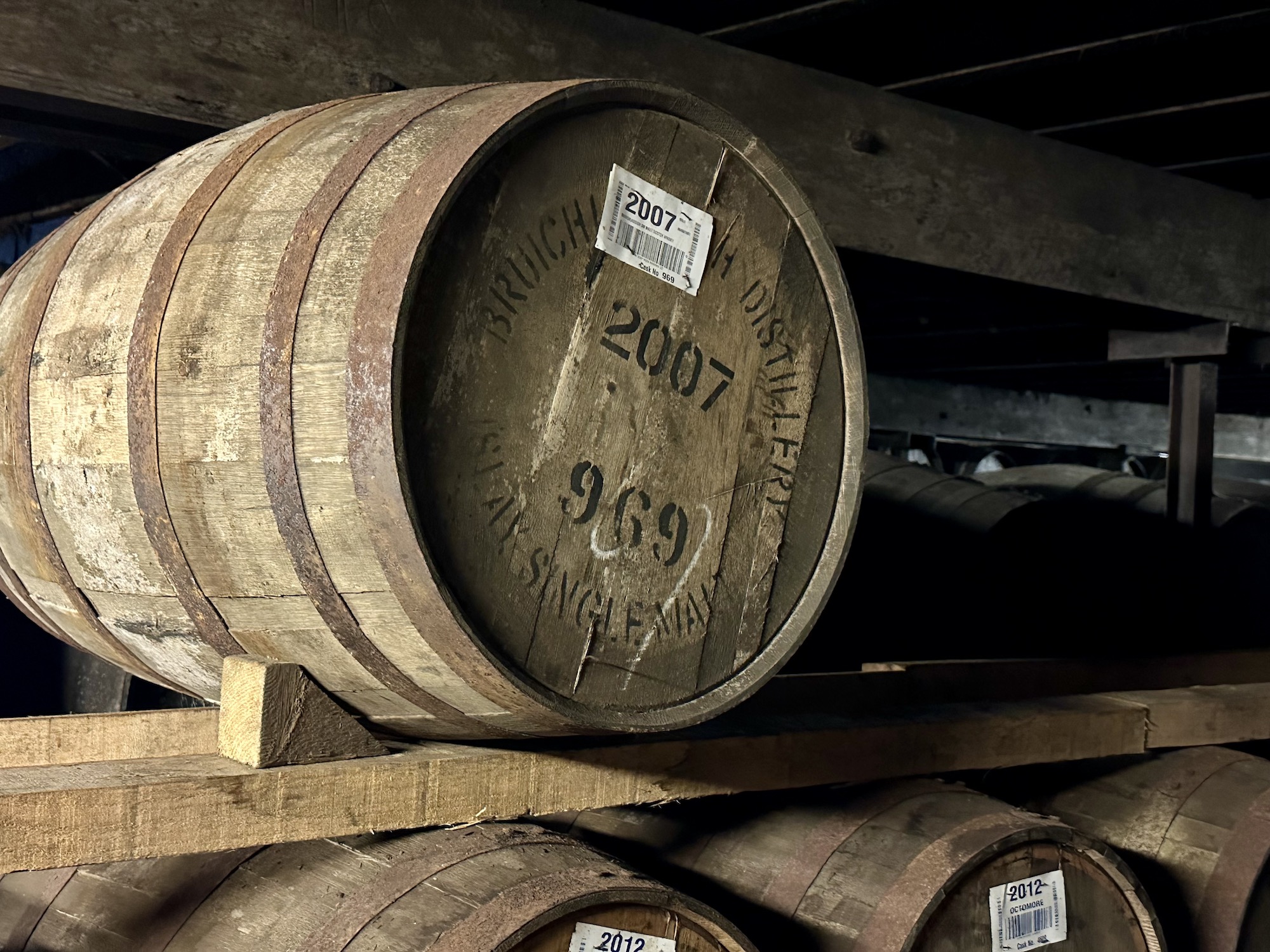
Of course!! There is always Germans!!
Thanks for the look of the inner workings of the the process!
C